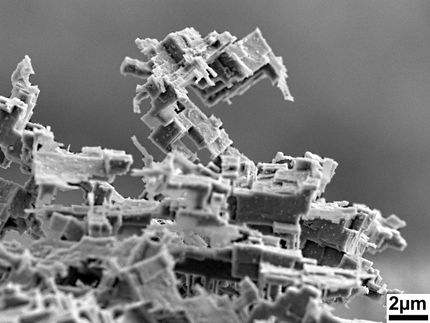Nacre-like structure from reinforced polymers
Advertisement
Strong, tough but light is the desired combination of properties for numerous applications but one that is rarely found in artificial materials. Now researchers at ETH Zurich have developed a new nacre-like composite that is twice the strength of naturally-occuring nacre. Stronger ceramic platelets combined with ductile biopolymer Chitosan have created composites capable of withstanding a deformation of 25% before rupturing.
Nacre, or mother-of-pearl, is one of nature's outstanding examples of a durable brick and mortar structure. Made of stiff, inorganic aragonite platelets and ductile biopolymers, the material combines toughness with a surprisingly high degree of strength. Now ETH Zurich researchers led by Ludwig Gauckler, Professor of Non-Metallic Materials in the Department of Materials, have shown that ceramic alumina platelets and biopolymer Chitosan can be assembled layer-bylayer to form thin foils of a composite material exhibiting a nacre-like structure. Nearly better than the original
The use of stronger ceramic platelets in combination with the ductile biopolymer, Chitosan, resulted in composites with strength twice that of natural nacre, and with a deformation of 25 percent before rupturing. Natural nacre, in comparison, deforms only one to two percent before reaching breaking point. Because it is not yet possible to obtain defect-free structures of such high platelet content as nacre, the stiffness of the new composite is five to seven times less than that of its natural counterpart. However, the new composite retains most of the ductility of polymer matrix composites, materials which can be used at high temperatures and are stronger, lighter and more resistant to corrosion. Conventional thin foils of other materials such as metals, polymers or fiber-reinforced composites may be up to one order of magnitude stronger and stiffer, but few materials reach the same combination of strength and ductibility per unit weight as the new nacre-like foils developed by the ETH Zurich team.
Development of the new nacre-like composite has opened the door to further research, such as manufacturing the foils at high speed. The ETH Zurich researchers are as well exploring the use of different "glues" and platelets of different geometry in order to improve the composite's mechanical properties. Also under study is the optimization of the platelet-glue interface. This research is currently being carried out in collaboration with Professor J. Woltersdorf and Dr. E. Pippel at the Max Planck Institute for Microstructure Physics in Halle, Germany and the polymer groups at ETH Zurich.
Future research will address achieving ever-thinner polymer layers and ceramic platelets while maintaining the integrity of the mechanical concept of nacre, as well as researching whether the polymer layer can approach atomic thickness yet keep the nacre-like behaviour of the composite.
Original publication: Bonderer, Lorenz J., André R. Studart & Ludwig J. Gauckler: "Bioinspired Design and Assembly of Platelet Reinforced Polymer Films"; Science 2008, Vol. 319, 1069.






























































